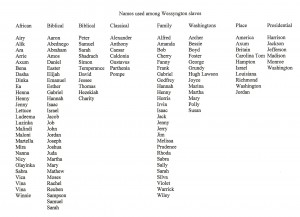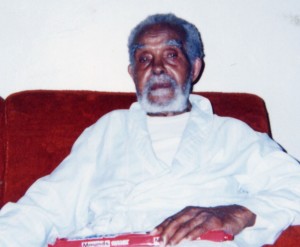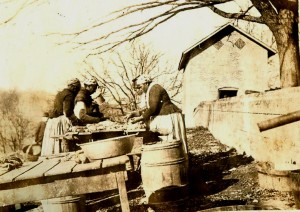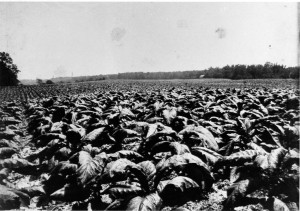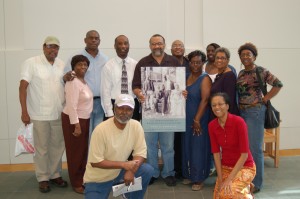http://www.berkshirefinearts.com/05-12-2014_slaves-and-slaveholders-of-wessyngton-plantation.htm
Posts Tagged ‘African American slavery’
SLAVES AND SLAVEHOLDERS OF WESSYNGTON PLANTATION EXHIBIT TOUR
Tuesday, May 13th, 2014Digitalization of Southampton County Virginia Records Opens New Doors for African American Research
Sunday, April 17th, 2011The entire Court Order book collection of the Southampton County, Virginia Court from 1749 through the early 1880s has been digitalized. This includes 57,000 pages, involving approximately one million names. This information is free online at: www.wiki.familysearch.org/en/Southampton_County,_Virginia. This collection is a goldmine for African Americans tracing their ancestors who once lived in Southampton County. Many of the books that have been digitized were 300 to 700 pages. Court Order books from the 1700s to the end of the slave trade lists the names of Africans when they were first brought to the area, their ages, owner’s names, and in a few cases the ships on which they were brought over. Wills and estate settlements lists the names of slaves, descriptions and family relationships. If your ancestors came from Southampton County, Virginia, you must check out this collection. Thanks go to Southampton Circuit Court Clerk, Richard Francis, and the volunteers of the Brantley Association of America who undertook this huge project in 2009 and 2010.
Sources of African American Names During Slavery
Tuesday, October 20th, 2009African Americans got their given or first names from various sources during the slavery. Some of them used African “day names” such as Cudjo, Mingo, and Cuffee, denoting the day of the week on which they were born. Others used names from the Bible, classical names, place names, names of plantation owner’s families, famous individuals like the presidents and their own family members.
The document above lists various sources of names of individuals enslaved on Wessyngton Plantation from 1796 to 1865.
Oral History Key to Tracing African American Roots
Sunday, October 18th, 2009In more than thirty years of researching my ancestry and the lives of African Americans enslaved on Wessyngton Plantation, I have had the honor of interviewing more than twenty individuals whose parents or grandparents lived on the plantation. These individuals ranged in age from eighty to 107 years old.
Although I found hundreds of documents about my ancestors from plantation records written by the owners of Wessyngton, I learned many personal things about my ancestors from conducting interviews with elder family members.
In 1994, I visited my cousin Joseph Washington 1895-2002 (pictured above) at his home in Mansfield, Ohio on his one hundred second birthday. As a child Joseph lived next door to my great-great-grandparents Emanuel and Henny Washington who were born at Wessyngton in the early 1800s. He related many stories about them to me including ghost stories that my great-great-grandfather used to tell all the children on the plantation and songs he used to sing. Joseph told me what life was like on the plantation when he grew up there and how many people on the plantation were related to one another.
Oral history is a vital key to tracing African American genealogy and provides many details about our ancestors that can’t be found in records.
Slave Women on Southern Plantations
Friday, October 9th, 2009Enslaved African American women performed various task on southern plantations and farms. Women on Wessyngton Plantation were not required to do any hard labor in the fields as the men did; however, they were an important part of other operations on the plantation. Women did light work in the gardens, they knitted and sewed for the slave community and their owners, worked the looms, and did the spinning and weaving. They were responsible for cooking, cleaning, washing, ironing, making cheese, preserves, and soap. No mother with a young baby was expected to do any outside work until her baby was two years old. There was a nursery on the plantation were children were cared for by elderly women too old to work. Women were a vital part of the pork processing industry on the plantation as seen in the photo above. Each week the women on the plantation would assemble at the plantation smokehouse (building in background of photo) and would be allotted bacon, meal, flour, sugar, and coffee based on the number of individuals in their families. Hundreds of hogs were killed at each year at Wessyngton to feed the enslaved population and the Washington family. Wessyngton had a reputation for producing its famous Washington Hams which could be found on the menus of the finest restaurants as far south as New Orleans and as far north as Philadelphia.
Slave Labor on Southern Plantations
Wednesday, October 7th, 2009
Slaves toiled endlessly, clearing land, plowing fields, raising livestock, erecting buildings, and planting crops to transform frontier landscapes into lavish plantations.
The enslaved population on Wessyngton Plantation primarily produced tobacco, which was very labor intensive. In 1860, 250,000 pounds of tobacco was produced on Wessyngton making it the largest producer of tobacco in the United States and the second largest in the world.
Presentation for St. Louis African American History and Genealogy Society
Friday, June 5th, 2009On May 23rd I gave a presentation about my book The Washingtons of Wessyngton Plantation: Stories of My Family’s Journey to Freedom to the St. Louis African American History and Genealogy Society at the Missouri History Museum. I made many new friends among avid genealogical researchers. I had a great time in St. Louis and look forward to visiting again.
